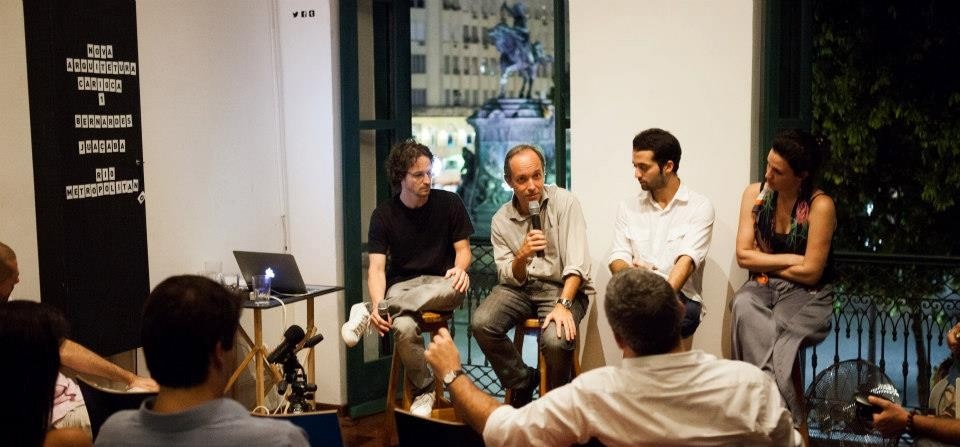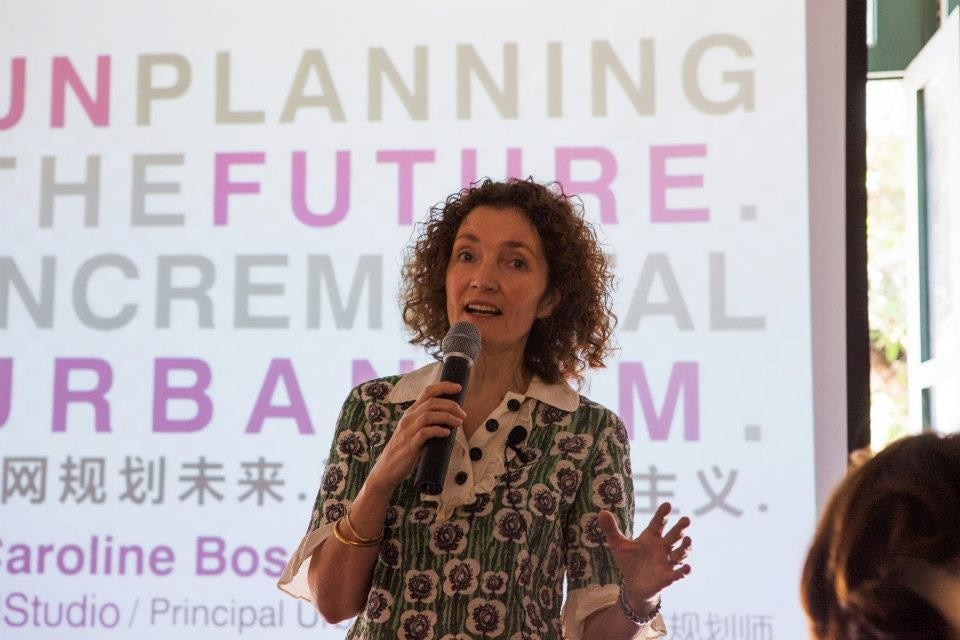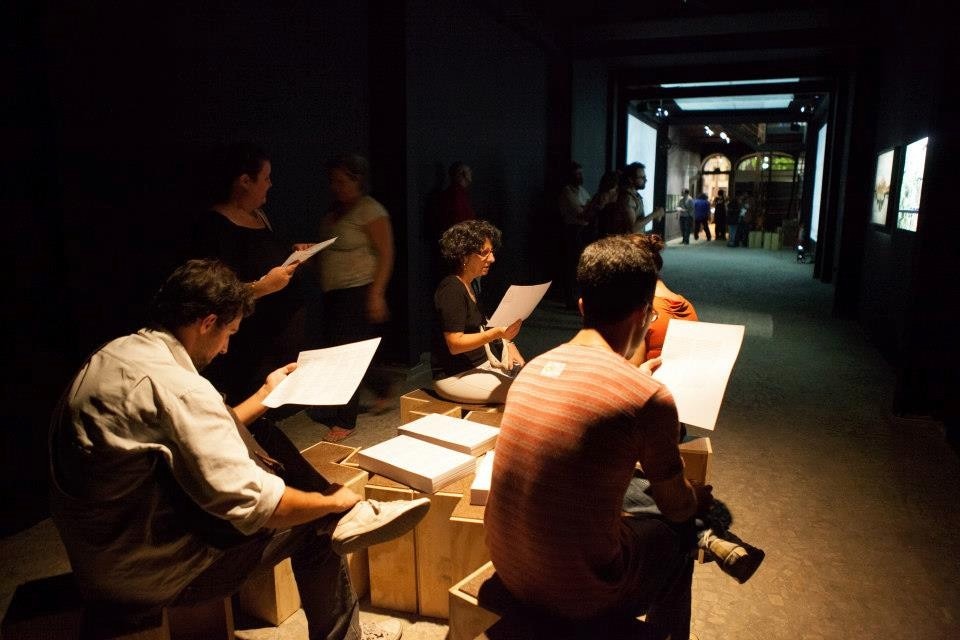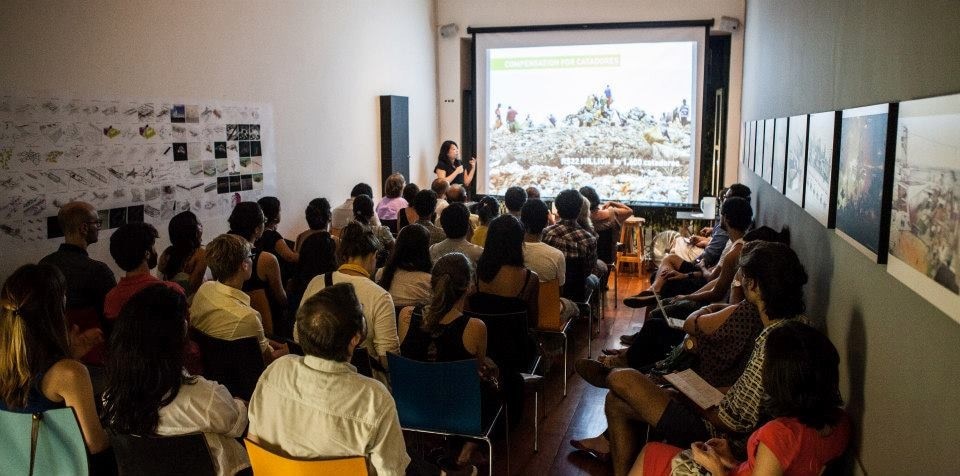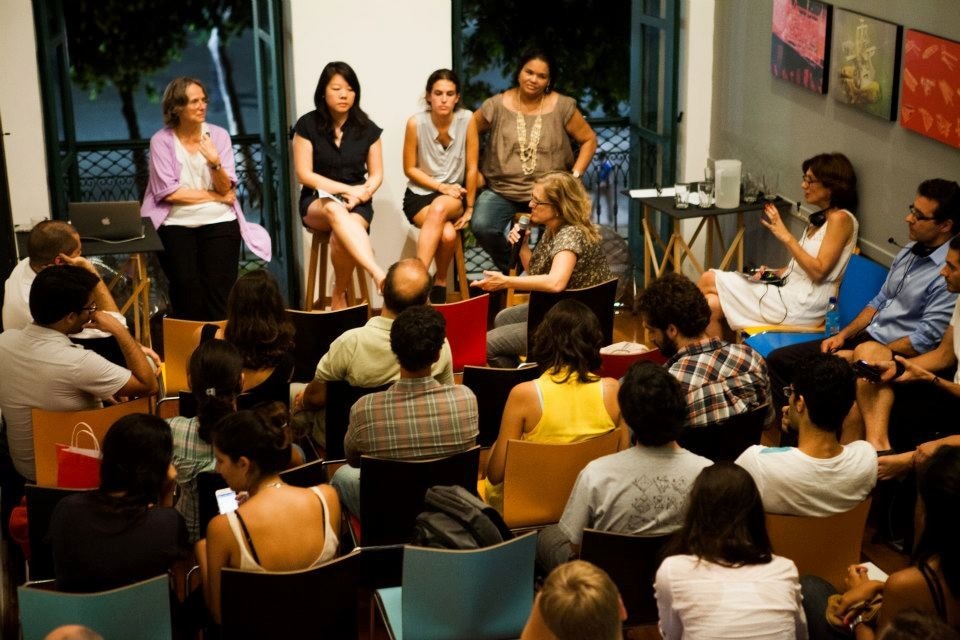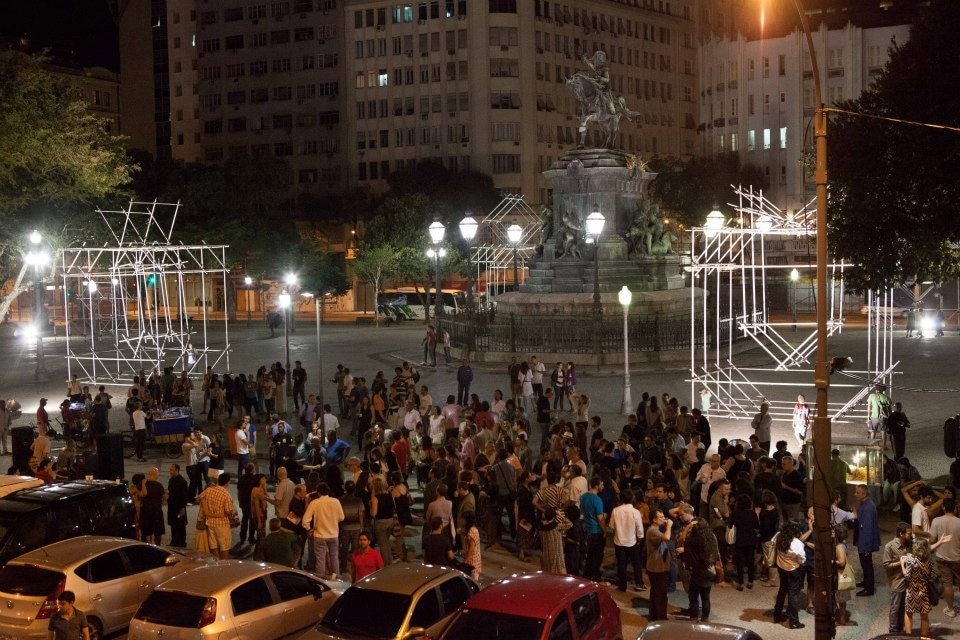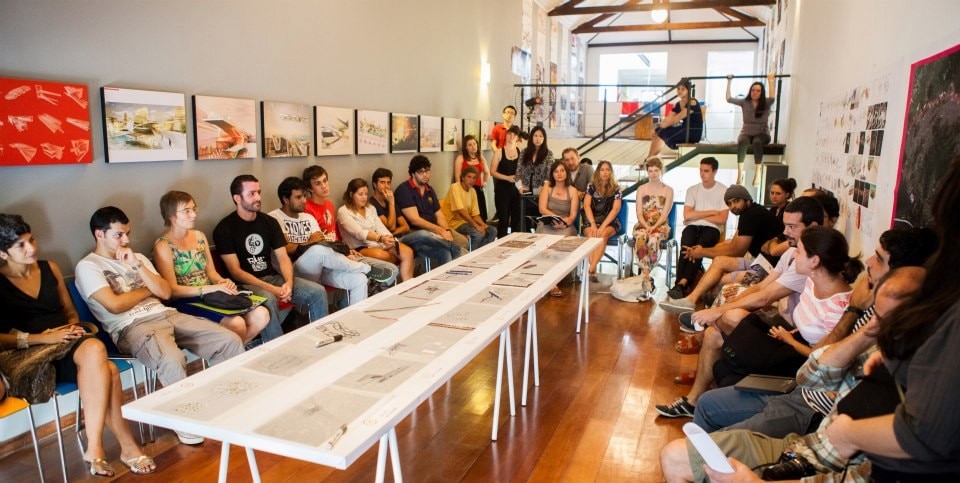
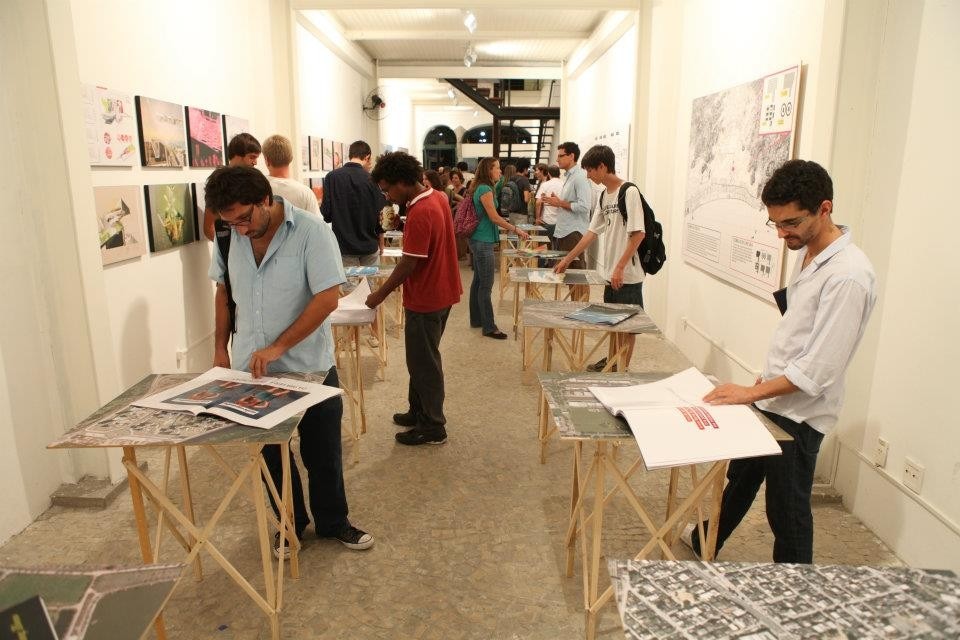
For director Pedro Rivera, “it’s vital that communities perceive Studio-X as an open space where they can actively and meaningfully participate, so every activity at Studio-X Rio is free and open to the public”. These participations take the form of exhibitions, workshops, book launches, research and exchange of experience. Wigley believes this model represents a new form of acting upon the city. Before, research was concentrated inside the academic departments of universities and now this practice starts to expand onto the streets, making the city the biggest laboratory.
One of the recent events on the agenda of Studio-X Rio was a panel on “inclusive urbanism”, focusing on favela upgrades and compensatory damages for garbage pickers. Panelists included a planner from the federal government’s Growth Acceleration Program (PAC), a Rocinha Favela resident, a Columbia student studying the Jardim Gramacho landfill closure, and a representative from the investment bank Caixa Econômica Federal. Rio de Janeiro, like London’s Olympic preparations for 2012, is using its sports mega events to rejuvenate run down and neglected areas of the city. These developments, however, have stirred an opposition which points out the lack of participatory planning and disregard for the history and culture of local inhabitants.
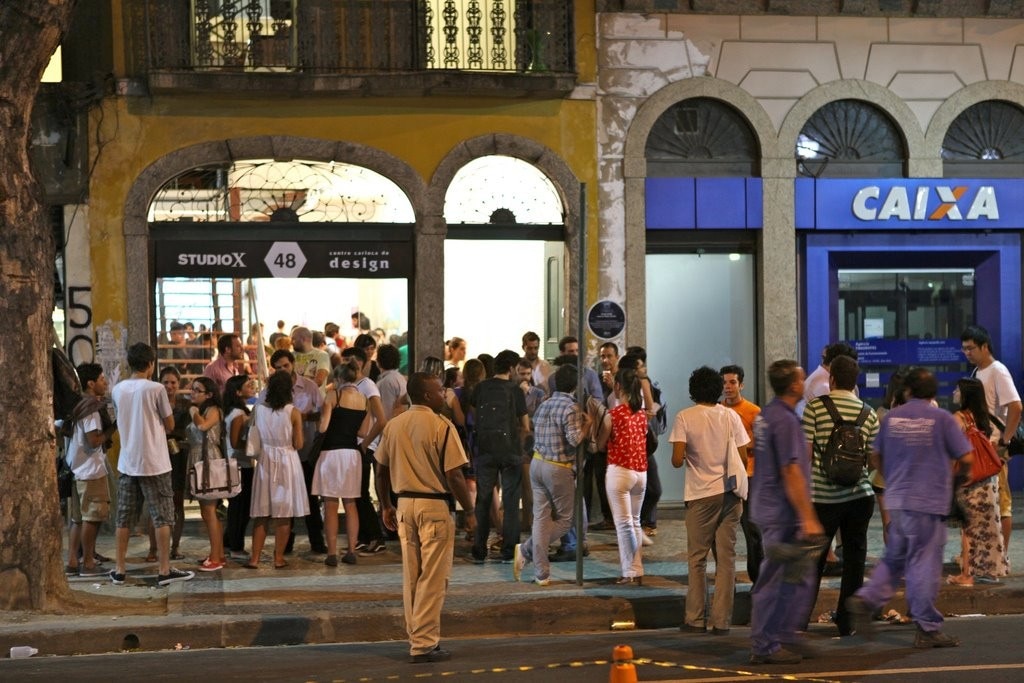
The lecture series entitled Nova Arquitetura Carioca [“New Architecture from Rio de Janeiro”] gives the stage for local architectural practices to bring their voices out to a wider audience. Recent speakers have included Carla Juaçaba, architect of the Rio+20 pavilion for the UN conference on sustainability, and Bernardo Jacobsen, architect of the newly inaugurated Museu de Arte do Rio [“Rio Art Museum”]. This is a welcome opportunity for younger architects, who have great difficulty in entering a market dominated by real estate.
Prominent international figures are also continuously brought into the scene. Some of these have included Caroline Bos (UN Studio), Djamel Klouche (l’AUC), Francine Houben (Mecanoo), Willem Jan Neutelings (Neutelings & Riedijk), Irma van Oort (KCAP), Juan Herreros, and Jüergen Mayer. By connecting people and ideas into a global network, building unprecedented bridges of knowledge-sharing, these events have an impact on the approaches and technologies that local architects use to solve the challenges of the profession.
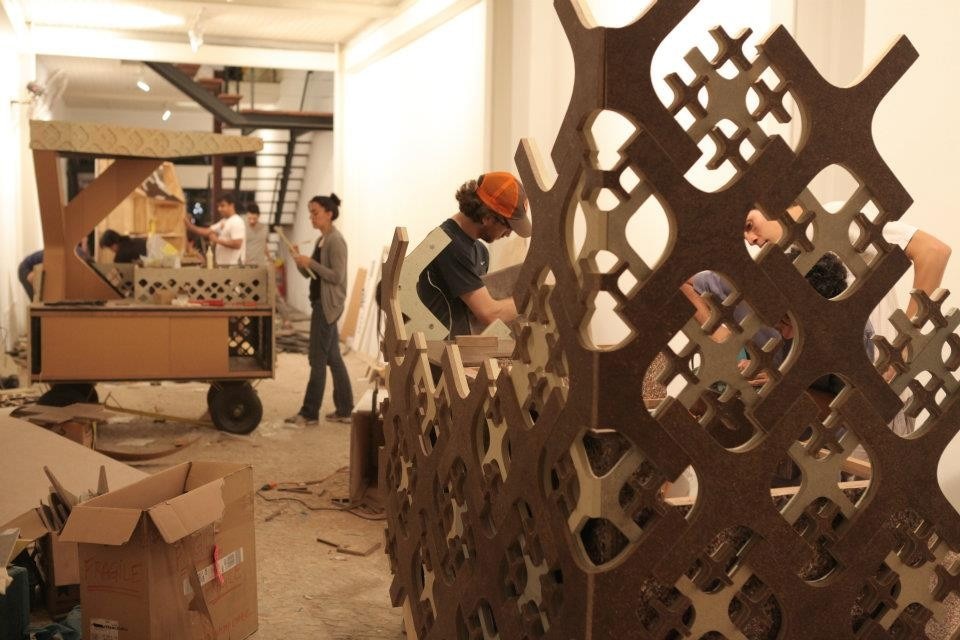
Studio-X Rio’s gallery spaces constantly host exhibitions, always accessible to the public during the daytime. At times these events spill onto the adjacent Tiradentes Square, further entangling urban space and architecture forum. An example is artist Raul Mourão’s series of kinetic sculptures, which makes reference to the dismantled fences from the square and from across various public spaces in Rio.
The academic activities are not limited to Columbia University and the GSAPP studios. Other architecture schools like Rio’s FAU UFRJ, PUC Rio, ENSA-Versailles and ETH Zurich have also been engaged with Studio-X Rio. These intra-institutional studios present an opportunity for students and academics from diverse backgrounds to participate in the resolution of questions, exchange and test of ideas about the city.
